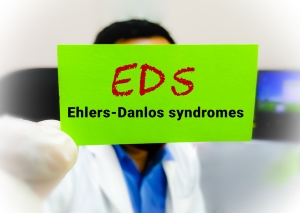NO FEE GUARANTEE
Disability Representation For Your Disability Claim
727-894-3188
Call Us For Free Consultation Now

Florida Ehlers-Danlos Syndrome Disability Lawyer
 Expert Ehlers-Danlos Syndrome Disability Attorneys Serving Florida
Expert Ehlers-Danlos Syndrome Disability Attorneys Serving Florida
The Social Security Administration (SSA) doesn’t always make it easy for those with Ehlers-Danlos syndrome to get the Social Security Disability Insurance (SSDI) or Supplemental Security Income benefits they deserve. If you have been denied a claim, contact our Florida Ehlers-Danlos Syndrome Disability Lawyer today. Many claims are denied because SSA says:
(1) Your Ehlers-Danlos syndrome won’t prevent you from working at least 12 months,
(2) Your Ehlers-Danlos syndrome is not severe,
(3) Your Ehlers-Danlos syndrome is uncontrolled because you haven’t followed your physician’s prescribed treatment,
(4) Your Ehlers-Danlos syndrome complications don’t meet the requirements of, or is the equivalent of, a Medical Listing,
(5) You can return to the lightest job you held in the 15 years before you became disabled, or
(6) There is other work you can do in the mythical national economy based on your age, education, transferable skills, and your residual functional capacity.
Not all cases of Ehlers-Danlos syndrome are severe enough to make you eligible for Social Security Disability benefits, but Nancy Cavey has successfully represented many SSA applicants with Ehlers-Danlos syndrome. She works to overcome the denial of the claim by working closely with you and your physician by showing that you:
– Meet the requirements for a disability listing for the complications of Ehlers-Danlos syndrome, or
– Proving that your limitations are too great for you to work at your old job or any other job in the national economy in view of your age, education and transferable work skills.
She offers a free initial consultation and welcomes the opportunity to speak with you about your Social Security disability claim.
What Is Ehlers-Danlos Syndrome?
Ehlers-Danlos syndrome is a genetic disorder that affects your connective tissue and, in particular, your skin, joints and blood vessels. Your connective tissue provides strength and elasticity to the structures of your body.
Vascular Ehlers-Danlos syndrome, one of the disorder’s most severe forms, can cause ruptures in the walls of blood vessels, intestines, or the uterus.
Signs and symptoms can vary from person to person. Common ones include:
- Overly flexible joints,
- Stretchy skin,
- Fragile skin resulting in poor healing wounds and skin infections,
- Fatty lumps of pressure points,
- Fatigue,
- Joint and muscle pain,
- Joint damage, dislocation and limited mobility,
- Back pain,
- Flat feet and
- Impaired vision
These symptoms can make it difficult, if not impossible, to work.
What Are The Complications Of Ehlers-Danlos Syndrome?
More often than not, the complications of Ehlers-Danlos syndrome are the key to winning your claim. These complications can include joint dislocations and the early onset of arthritis as a result of overly flexible joints. Fragile skin can result in cuts and wounds that are difficult to heal. Vascular Ehlers-Danlos syndrome can result in ruptures of major blood vessels.
There is no listing for Ehlers-Danlos syndrome in the SSA’s “Listing of Impairments.” However if your complications from Ehlers-Danlos syndrome equal a listing, you might be approved for benefits at Step 3 of the Five-Step Sequential Evaluation.
SSA will review your medical records and look for the following:
- Major dysfunction of a joint (Listing 1.02)
- Vision loss (Listing 2.02 and 2.04)
- Aneurysm of the aorta (Listing 4.10)
- Gastrointestinal bleeding requiring a blood transfusion (Listing 4.05),
- Poorly healing skin and bacterial infections (Listing 8.04), and
- Amputation of an extremity (Listing 1.05)
SSA has ruled that arthritic and connective tissue diseases covered by Immune System Listing 14.00 don’t apply to Ehlers-Danlos syndrome because it is genetic and not an immune system disorder.
If you have Ehlers-Danlos syndrome and another medical impairment, SSA is required to consider the combined effects of your impairments when determining if your condition is equal to a listing or when doing your RFC analysis at Steps 4 and 5.
If you don’t meet or equal a listing, then SSA will determine your entitlement to benefits based on medical and vocational criteria at Steps 4 and 5. Because the listing requirements are difficult to meet, SSA finds that most disability applicants don’t meet a Listing.
If your Ehlers-Danlos and its complication don’t meet a listing, you will have to prove that you:
- Can’t return to the lightest job you held in the 15 years before you became disabled (PRW), and
- There isn’t any other work you can do in the mythical national economy based on your age, education, transferable skills and your residual functional capacity (RFC)
SSA or, ultimately an Administrative Law Judge, will answer those questions by determining your residual functional capacity. Your RFC is what you can do despite your Ehlers-Danlos syndrome.
Residual Functional Capacity For Ehlers-Danlos Syndrome
The SSA will review your medical records at the Initial Application and Reconsideration stage of the claims process and determine your functional capacity to perform sedentary, light, medium and heavy work.
SSA medical consultants often opine that a Social Security Disability applicant can do light and sedentary work, and that will result in a claims denial. The lower your RFC the more likely that you can’t return to the lightest job you held in the last 15 years or perform other work. SSA doesn’t tell applicants or physicians about the existence and importance of properly completed RFC forms that explain:
- How far you can walk,
- How long you can stand and sit at one time and for an eight-hour work day,
- How much and how often you can lift, stoop, squat, bend during an eight-hour work day,
- Whether you have to alternate sitting and standing,
- Whether you have problems with your joints that affect the use of your arms and legs and fine motor use of your hands and fingers,
- Whether you have problems with your feet that make it difficult to operate machinery,
- Whether you have open wounds,
- Whether you have problems with your vision,
- Whether you have difficulty concentrating for long periods of time,
- Whether you have chronic pain,
- Whether you have good days and bad days and how many days per month you would miss from work, and
- Whether you have psychological problems, including depression or anxiety, that would interfere with your ability to work
This is not an exhaustive list of all of the questions on a diabetes or other applicable RFC forms. But you can see that having an explanation of what you can do physically, cognitively and emotionally is key to winning your case.
Many SSA cases are lost because the applicant did not obtain an RFC or the right RFC form, or because their treating physician didn’t properly complete the RFC form. That is one of the many reasons you should have an experienced Florida Ehlers Danlos Syndrome Disability Lawyer like Nancy L. Cavey represent you in your claim.
How Your Residual Functional Capacity Is Used At A Social Security Hearing
Many claims for Ehlers-Danlos syndrome are denied both at the Initial Application and Request For Reconsideration stages of the claims process.
At the hearing stage, the Administrative Law Judge will determine your RFC and give hypotheticals to the vocational evaluator (VE) who will testify at your hearing. The judge will ask the VE to take into consideration your RFC, as determined by the judge, your age, education and prior work experience in determining:
- Whether you can return to the lightest job you held in the last 15 years,
- Whether there is other work you can do or could learn to do.
It is crucial that you are represented at a hearing to make sure the right questions are asked of the VE.
How Can My Florida Ehlers-Danlos Syndrome Disability Lawyer Get Benefits I Deserve?
Ehlers-Danlos and its complications can interfere not only with your daily activities but with your ability to work. If you no longer can work or your doctor has told you to apply for Social Security disability, you should hire Nancy Cavey to help you:
- file your initial Social Security Disability application. The application process is confusing and designed so you make mistakes that can result in a delay or even a denial of your benefits;
- challenge a wrongful denial of your Social Security disability application or Request for Reconsideration;
- file a Request for Hearing and represent you at the hearing with the Administrative Law Judge who will decide if you get benefits. She will have your physician, if possible, complete the right RFC(s), prepare you for the hearing, prepare a hearing brief, and be prepared to cross-examine the VE.
The SSA is in the business of denying claims and will use any reason to deny your benefits. The odds of getting your Social Security benefits are greater when you are represented by experienced Social Security Disability attorney Nancy Cavey.
Contact Our Florida Ehlers-Danlos Syndrome Disability Lawyer Today
Ehlers-Danlos syndrome and its complications can make it difficult, if not impossible, to work. You owe it to yourself and your family to get help today! Ms. Cavey can explain the Five-Step Sequential Evaluation process used in every claim, the claims process and how to get your disability benefits. Contact our Florida Ehlers-Danlos Syndrome Disability Lawyer today for a free consultation at 727-894-3188.



